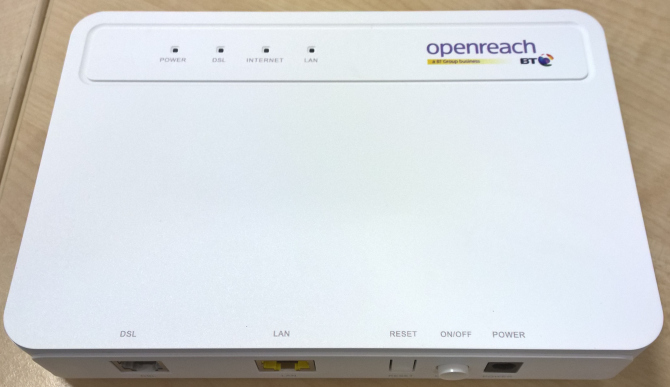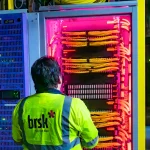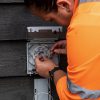Openreach to Start UK ISP Trial of Self Install G.fast Broadband
As predicted Openreach (BT) has today announced the forthcoming launch of a new Proof of Concept (PoC) trial, which will make it possible for ISPs to offer customers a “self install” (i.e. no engineer required) variant of their new 330Mbps capable G.fast (hybrid fibre) based ultrafast broadband service.
The G.fast technology works in a similar way to the VDSL2 based Fibre-to-the-Cabinet (FTTC) service. Essentially a fibre optic cable is run to your local PCP Street Cabinet, which is then fitted with an extension “pod” (on the side) to house the new line cards and kit. After that the G.fast service reaches your home via the existing copper line (works best on shorter lines under c.200-300 metres).
At present the only way for end-users to get the service is via a managed installation, which requires an engineer to enter your home and plug everything in for you (the Master Socket may also be upgraded to an NTE5C + new faceplate). This is actually quite handy because engineers can often spot and resolve issues that might otherwise negatively impact your performance, but it does add a cost (see below).
Advertisement
Meanwhile many of the early installs have tended to involve a two box solution, which means that a dedicated broadband modem (Huawei MT992 – pictured below) is used to handle the G.fast side and then you plug your own kit (or the ISP’s router) into that in order to distribute the internet connection around your home (via WiFi etc.).

However in a self-install setup the ISP simply sends their customer the necessary hardware and asks you to plug it all in yourself, which is usually fairly simple (especially if the provider can use a single router solution that integrates the G.fast modem, such as BT’s Smart Hub X or Smart Hub 2). On top of that, self-install methods are cheaper (no home engineer visit) and that makes the possibility of packages with free activation or shorter contracts more viable.
Back in June 2018 we revealed that a G.fast Self Install service would be announced before the end of this year (here) and Openreach has today confirmed their plan. The initial PoC test will begin in January 2019 and then run for 3 months. The plan is to test it with approximately 1,000 lines and during this period the normal one-off connection charge will be reduced to zero.
In a short briefing Openreach said, “The proof of concept is open to any [ISP] who has signed the Gfast self install proof of concept terms and conditions which are available on request.”
Advertisement
The introduction of a Self Install feature marks the next logical step for this service. On the other hand there’s something to be said for the benefits of having an engineer do the work, particularly with a technology like G.fast that uses more spectrum frequency (106MHz and up to 212MHz in the future) and may thus be more exposed to interference issue (e.g. Repetitive Electrical Impulse Noise or simply REIN).
Under the old VDSL2 based FTTC service you could still get a reasonable speed even if your home wiring had some issue, but this is much more of a challenge with the high sensitivity of G.fast. Hopefully Openreach’s PoC will be able to identify such problems and finds way to mitigate them. In particular a lot of people still have older Master Sockets that remain exposed to interference from the Bell/Ring Wire (easy enough to solve but only if you know what you’re doing and some homes have very different arrangements).
Mark is a professional technology writer, IT consultant and computer engineer from Dorset (England), he also founded ISPreview in 1999 and enjoys analysing the latest telecoms and broadband developments. Find me on X (Twitter), Mastodon, Facebook, BlueSky, Threads.net and Linkedin.
« Ofcom Move to Redefine UK Geographic Fibre Markets from 2021

















































Comments are closed